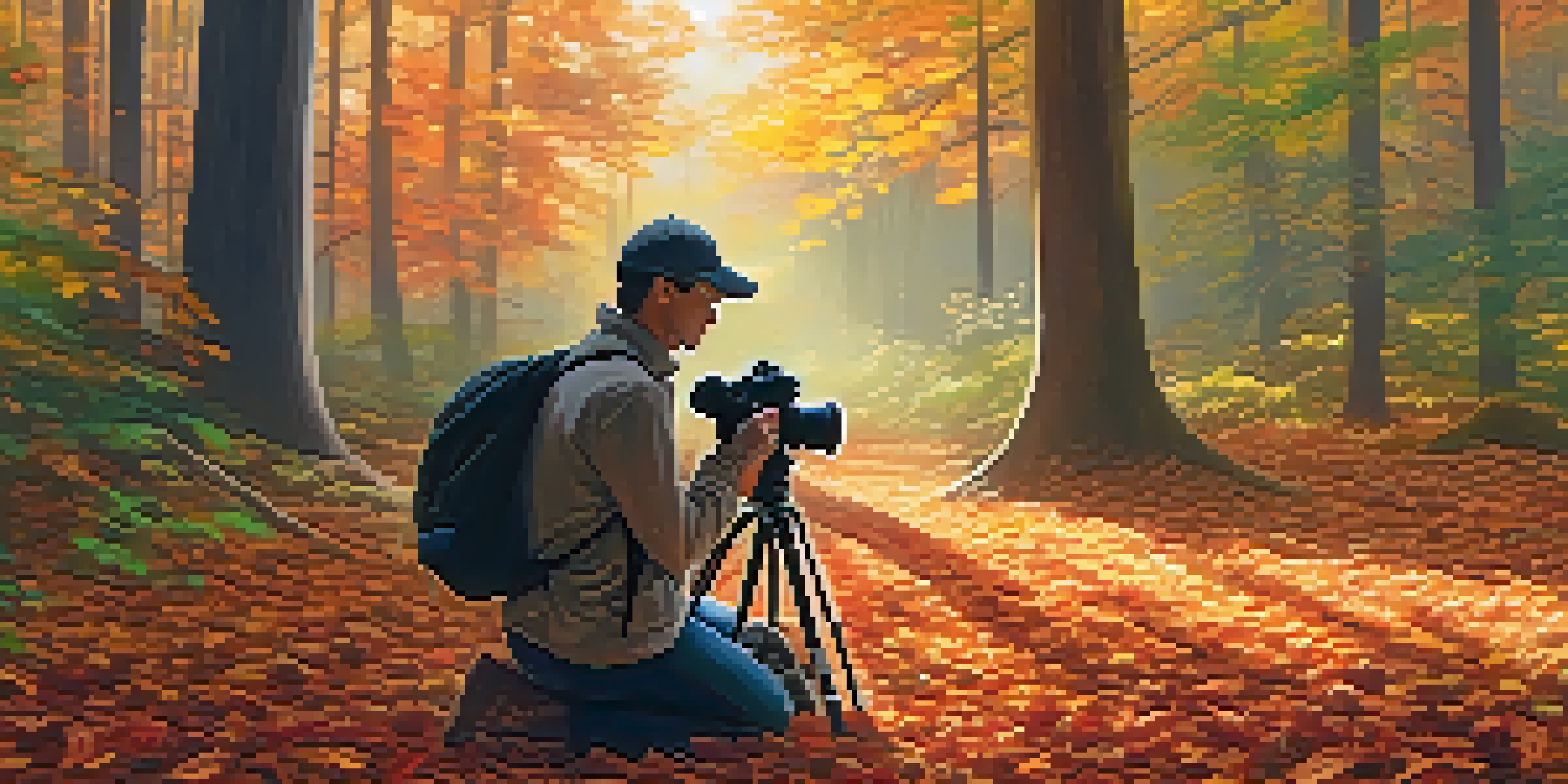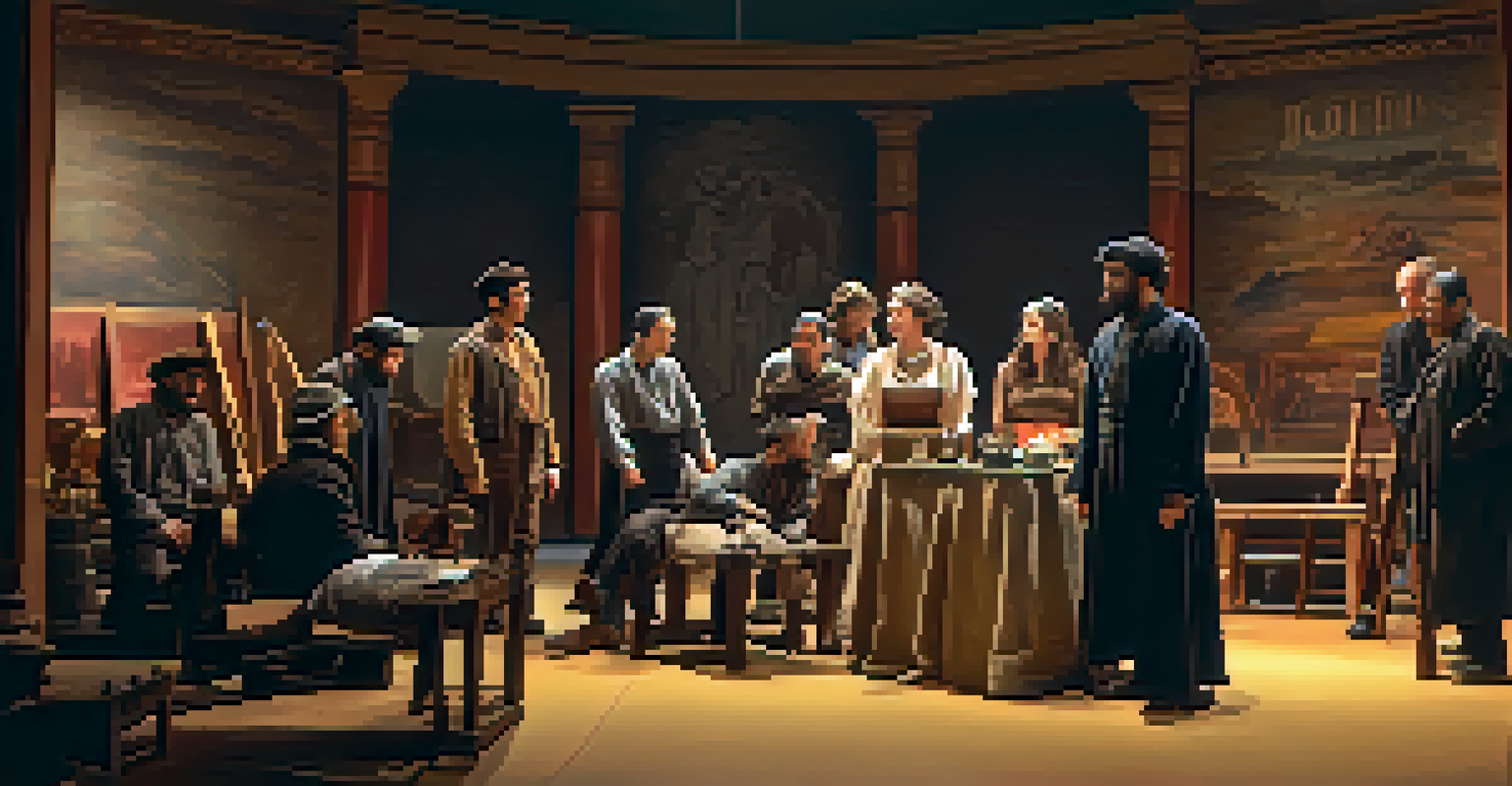Documentary and Drama: Blurring the Lines of Reality

Understanding Documentaries: A Window into Reality
Documentaries serve as a captivating glimpse into real-life events, people, and issues. They aim to inform, educate, and sometimes persuade viewers by presenting factual information. By showcasing real stories, they provide a platform for voices that might otherwise go unheard.
Documentaries are a way to tell the truth about the world, often through the lens of a specific story.
The power of documentaries lies in their ability to evoke empathy and understanding, often compelling audiences to reconsider their views. For instance, films like '13th' explore systemic racism, prompting conversations that ripple through society. This documentary format invites viewers to reflect on their own experiences and societal norms.
However, the line between pure documentary and dramatization can sometimes blur, as filmmakers make choices about how to present their stories. This blend of fact and artistic interpretation raises questions: How much creative license is acceptable in documentary storytelling?
The Art of Drama: Crafting Compelling Narratives
Drama, at its core, is about storytelling—often taking liberties with reality to convey deeper truths or emotions. Through characters and plots, dramas explore the human condition, making complex themes more relatable and engaging. A well-crafted drama resonates with audiences, often reflecting their own struggles and triumphs.

Take, for example, the acclaimed series 'The Crown.' While it dramatizes the lives of the British royal family, the emotional truths captured resonate with viewers, regardless of their knowledge of history. This ability to merge fact with fiction allows dramas to explore themes of love, duty, and sacrifice in a way that feels personal.
Documentaries Evoke Empathy
Documentaries provide a powerful platform for real stories, encouraging viewers to empathize and challenge their perspectives.
Yet, this theatrical approach can also lead to historical inaccuracies or oversimplifications. As viewers, it's essential to discern where dramatization enhances the narrative and where it might distort reality.
Blurring the Lines: The Rise of Docudramas
Docudramas emerge as a fascinating hybrid of documentary and drama, weaving together factual accounts with dramatic reenactments. This format appeals to viewers by providing the best of both worlds: engaging storytelling alongside real-life events. Series like 'The People v. O.J. Simpson: American Crime Story' illustrate how this technique can captivate audiences while sparking discussions about historical events.
Drama is the art of making people feel what they would rather not feel.
The docudrama format allows for a deeper exploration of characters and motivations, offering insight into the emotional landscape behind the headlines. By dramatizing real events, filmmakers can humanize figures often portrayed as mere statistics in traditional documentaries.
However, this blending can lead to controversy as viewers grapple with the accuracy of the presented events. When does artistic interpretation enhance our understanding, and when does it stray too far from the truth?
The Impact on Audience Perception and Engagement
As the lines between documentary and drama blur, audience perception of truth is inevitably affected. Viewers often find themselves questioning the authenticity of what they watch, leading to a more critical consumption of media. This heightened awareness can foster a more engaged audience that seeks out multiple sources for information.
The emotional engagement that drama provides can also make viewers more receptive to the underlying messages in documentaries. When facts are presented through a compelling narrative, they tend to resonate more deeply, prompting viewers to take action or change their perspectives.
Drama Enhances Emotional Connection
Dramatizations can engage audiences more deeply, making complex themes relatable while sometimes risking historical accuracy.
However, this emotional connection can be a double-edged sword. It raises the risk of viewers prioritizing narrative over factual accuracy, potentially leading to misunderstandings about real-world issues.
Ethical Considerations: The Responsibility of Filmmakers
Filmmakers walk a fine line when blending documentary and drama, carrying the weight of ethical responsibility. They must navigate the balance between creative storytelling and accurate representation of real-life events. This responsibility is particularly crucial when dealing with sensitive topics that impact individuals and communities.
For instance, dramatizing tragic events can evoke strong emotions, but it also risks trivializing the experiences of those directly affected. Filmmakers must ask themselves: Are they honoring the truth, or simply seeking to entertain?
This ethical dilemma extends to the portrayal of historical figures and events, where dramatization can shape public perception. As audiences, we must remain vigilant, recognizing the power of storytelling while questioning the motives behind it.
Case Studies: Successful Blends of Documentary and Drama
Several successful films and series highlight the effective blending of documentary and drama, providing rich examples of this artistic approach. 'The Act,' which dramatizes the real-life case of Gypsy Rose Blanchard, combines factual elements with compelling narrative techniques to create a gripping story.
Another noteworthy example is 'When They See Us,' a limited series that depicts the wrongful conviction of the Central Park Five. This series not only educates viewers on the injustices faced by these individuals but also humanizes their stories through dramatic storytelling.
Ethics in Blending Genres
Filmmakers face ethical dilemmas when merging documentary and drama, balancing creative storytelling with the responsibility of accurate representation.
These case studies demonstrate that when done thoughtfully, the merging of documentary and dramatic elements can lead to powerful, transformative media that informs and inspires action.
The Future of Storytelling: Evolving Genres and Formats
As technology advances and audience preferences evolve, the genres of documentary and drama will likely continue to intersect. New formats, such as interactive documentaries and immersive experiences, offer exciting possibilities for storytelling. These innovations allow viewers to engage with content in ways that were previously unimaginable.
Additionally, the rise of streaming platforms has made diverse content more accessible, encouraging filmmakers to experiment with genre blending. This democratization of storytelling invites a wider range of voices and perspectives, enriching the narrative landscape.

Looking ahead, the challenge will be maintaining integrity while pushing creative boundaries. As we embrace these new storytelling methods, it’s crucial to remember the importance of truth and authenticity in our narratives.